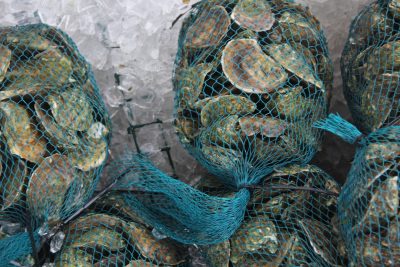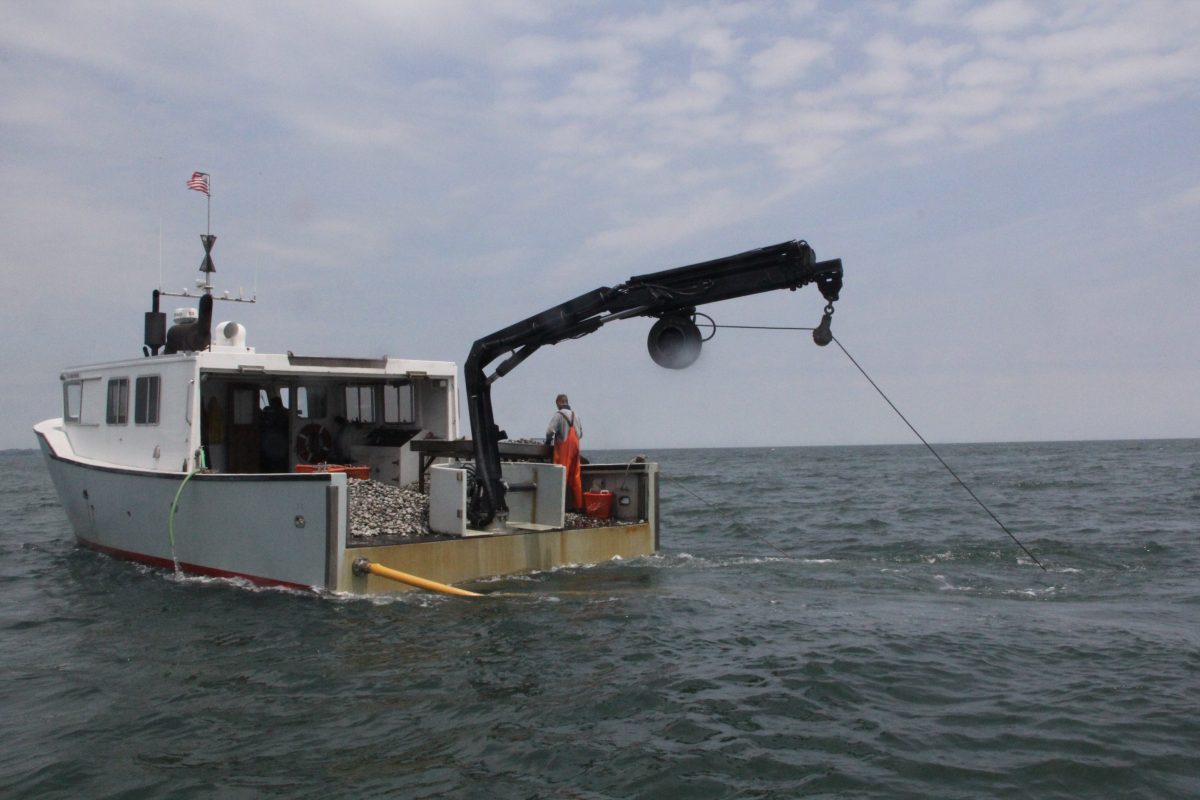
Connecticut shellfish farmers who endured severe sales losses due to the COVID-19 pandemic are being offered the chance to earn income by working on a unique project to rehabilitate the state’s natural shellfish beds.
The project, developed by Connecticut Sea Grant and the Connecticut Department of Agriculture, will employ shellfish farmers with vessels normally used to harvest oysters to instead raise and relocate oyster shell buried in silt and other materials off the bottom of the beds. The exposed oyster shell would then provide the preferred habitat for oyster larvae. The shellfish farmers would be compensated for a portion of their hours worked.
The project is the second phase of a three-part initiative to support shellfish farmers hurt by sales losses to restaurants and other key customers. At the same time farmers are being assisted, the natural shellfish beds that are the main source of oyster seed for Connecticut’s commercial and recreational beds will be restored to greater productivity. The natural beds span about 7,000 acres offshore in areas mainly from West Haven to Greenwich.

“We are pleased to have been able to secure new funds to support the aquaculture industry, using innovative avenues to provide some short-term cash flow for work that will enhance the productivity of natural beds in the future, with associated economic and ecological benefits,” said Sylvan De Guise, director of Connecticut Sea Grant.
Connecticut Sea Grant and the state Department of Agriculture collaboratively received $74,999 in federal funds from the National Sea Grant Office to fund the project, which is being supplemented with $50,474 worth of in-kind services. During the first phase of the project that began on May 6, shellfish farmers have been working on different areas of the natural beds than are being targeted in the second phase.
A third phase of the project, which would begin pending approval of additional federal funding, would compensate farmers for shellfish that have grown too large for consumer markets. Those shellfish would then be planted on closed portions of state and town shellfish beds across the state to repopulate those areas.
“Over the past four weeks, more than one dozen shellfish companies have actively rehabilitated the state’s public shellfish beds during phase one of this project plan,” said state Agriculture Commissioner Bryan P. Hurlburt. “The implementation of phase two within the next week will enable continuation of this critical work in shallower areas and provide producers with compensation through our collaboration with Connecticut Sea Grant.
“These efforts are crucial to ensuring the future sustainability of the state’s shellfish industry through enhanced management of Connecticut’s public seed beds and facilitating availability of oyster seed to the entire industry,” Hurlburt said.
The Department of Agriculture will continue to document the enhancement achieved through the rehabilitation efforts using a combination of vessel monitoring system data, landings reporting and via the deployment of an underwater video camera. The camera footage would document bottom conditions of those areas that have been worked versus baseline conditions in areas of the beds that remain untouched. Staff intend to document long-term recovery of beds by assessing conditions and oyster recruitment levels on project areas in subsequent seasons. The information will be used to develop best management practices for the natural oyster seed beds to achieve maximum production of oyster seed there in the future.
Shellfish companies interested in participating in the program should submit their request via email to David Carey, director of the Department of Agriculture Bureau of Aquaculture, at: David.Carey@ct.gov.